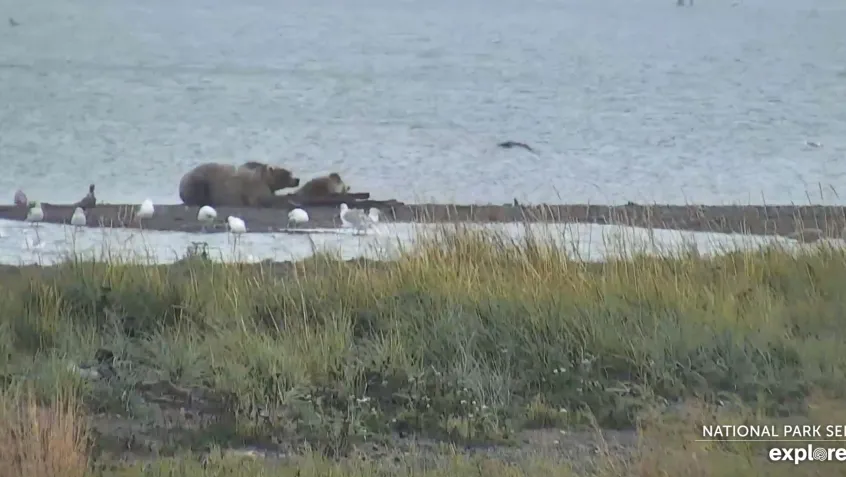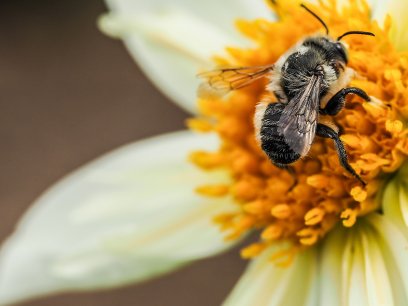
As the United States battles the COVID-19 pandemic, the Centers for Disease Control and Prevention advise the general public to remain close to home, distanced from others, and masked to help slow the spread of the virus. These necessary guidelines have impacted many facets of daily life in America, including travel to public lands across the country during the typically busy summer and fall months.
Without access to public lands, people are less able to connect with nature, enjoy unique wildlife experiences, and engage in conservation activities outside of their home. However, by harnessing the power of technology, public lands can overcome these physical barriers and allow visitors a chance to explore public lands and get an up-close view of wildlife from the safety of their homes.
Forging New Connections Online
Recently, researchers from East Carolina University and Kansas State University found that wildlife webcams can still stimulate an emotional connection between viewers and wildlife, and can do so to a degree equal to or greater than the emotional connections formed from an on-site experience.
The research team surveyed on-site and online visitors to gauge their support for or interest in parks and protected areas, their emotional attachment to the wildlife (in this case brown bears at Katmai National Park and Preserve in Alaska), and support for increased conservation management practices at the park. After watching the bears online, viewers expressed a self-reported increase in their interest in parks and protected areas as well as a strong emotional attachment to the bears. In fact, online viewers showed more broad support than their on-site peers, even though the majority of them had never set foot in the park.
From this study, the researchers suggest that other parks consider adopting a webcam method to share footage of a flagship or charismatic species from their respective public land to help increase interest in both the land and related conservation issues.
Introduction to Wildlife Webcams
What are wildlife webcams? Also called trail or game cameras, they are installed in public land areas where particular wildlife are known to be active, and can be set up to take images or video in either night or day, depending on the type of wildlife that is of interest.
The images or video are uploaded or streamed on the public land's website or social media where the general public can enjoy the footage without the traditional barriers associated with an in-person wildlife experience, such as travel, cost, or physical access for people with mobility impairments.
By using wildlife webcams, not only are natural experiences more available to the public, but more of existing public lands can be safely viewed and enjoyed. Heavy visitation can place stressors on the wildlife living on public lands—for example, reducing species' fecundity or increasing disease transmission.
Some ecosystems are so fragile that in-person interactions are extremely limited, such as those covered by the Wilderness Protection Act or by their status as a National Marine Sanctuary. Using webcams at such fragile sites in lieu of physical visits allows the public to learn more about the ecosystems without the threat of heavy visitation. In this way, the use of wildlife webcams can expand the opportunity for park visitation and connection far beyond what is possible with physical visits.
How to Set Up a Wildlife Webcam System on Public Lands
For land managers looking to implement a wildlife webcam system but unsure of an appropriate flagship species for their public land, choose a species that tends to be large, possibly endangered, and a top predator. Species with aesthetic or ecological appeal that are attractive or memorable tend to garner more public support. For example, mammals typically receive more attention than birds, and animals with a higher body mass receive more attention than their smaller counterparts.
By engaging the public with this charismatic flagship species, interest in conservation issues relevant to the species can be heightened, and the conservation efforts that result from this interest can have an umbrella effect over far more of the wildlife within the park. “A high tide raises all boats,” so to speak.
With your flagship species in mind, the next step is to install some cameras. (If you are not a staff member of a public land site, please contact your local public land to learn more about their existing work with camera traps, and discuss any questions you have with them. Do not install cameras without their permission.) Oregon State University Extension Service has a guide on cameras to look for and settings to consider for still photography, and the National Parks Conservation Association has an article covering their photographer's experience and advice setting up cameras in parks.
Share the Beauty of America's Public Lands Safely—Online!
Wildlife webcams can offer a glimpse into the majesty of America's public lands from anywhere on the planet. Not only do they help the average person learn more about the lands and waters that support these flora and fauna film stars, they also build up support for the conservation needed to maintain them.
The use of streaming video and photos over the internet can allow for a broader, more diverse viewing public, as well as a more varied glimpse at these natural treasures—all while forging an emotional connection comparable to an in-person experience.
Looking for inspiration, or just hoping to catch a candid glimpse of a bear in a stream? The US Fish and Wildlife Service's webcams can all be seen here, and all of the webcams active in the National Park System can be viewed from here.


